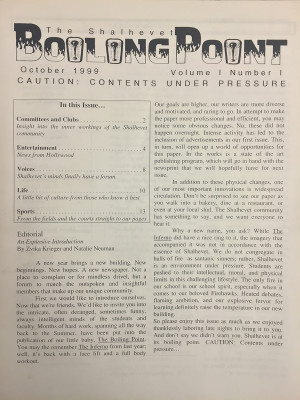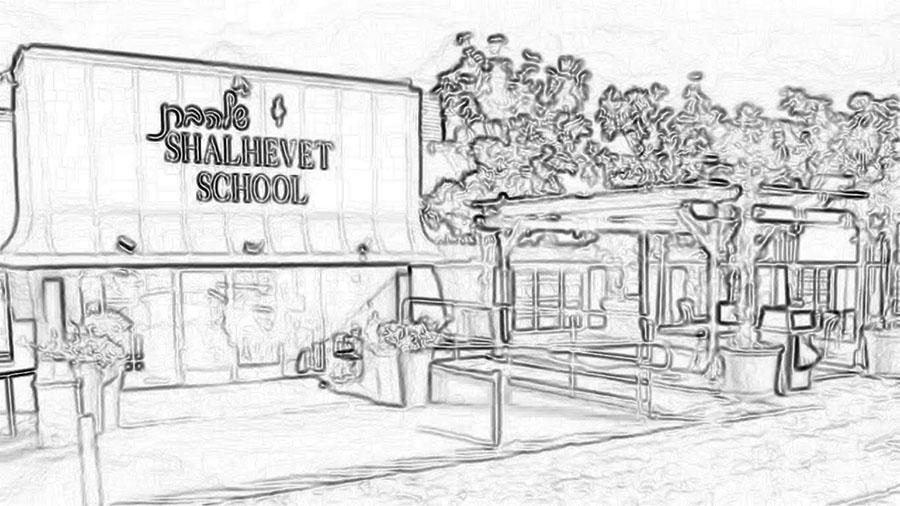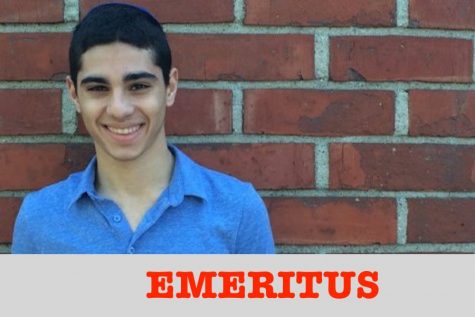In all that’s new, a strong echo of 1999
‘A new year brings a new building. New beginnings. New hopes,” wrote the BP’s first editors in first issue
BP Illustration by Gabe Silverstein
MEMORY LANE: Outside view of the old Shalhevet building. The school moved there the year the Boiling Point was founded.
October 8, 2015
My classmates and teachers consistently talk about how Shalhevet so drastically changed over the years. In many ways, they’re right. Naturally teachers come and go, rules change, curriculums mature, and buildings are remodeled. But scrape off all the added detail and what remains is a core impressively untainted by time.
I say that with confidence having just read the first-ever issue of The Boiling Point, which was printed on the occasion of Shalhevet’s first move from the JCC to the building on Fairfax in the fall of 1999. Here we are re-moving to this location 16 years later, and the first page editorial, depicting our school on the first issue of volume one, signed by Tzvika Krieger and Natalie Neumann, is still applicable today.
Students’ and teachers’ minds are still intricate, intelligent and often deranged. We are still being pushed to our “intellectual, moral, and physical [well perhaps not physical] limits.”
School spirit? Check. Heated Debates? Absolutely.
Could you not picture Rabbi Segal or Reb Weissman enthusing something like “our explosive fervor for learning definitely raise the temperature in our new building”?
And case you’ve always wondered, the founders of the newspaper explain that they called it The Boiling Point because “Shalhevet is an environment under pressure”– which has always been the case. For such a small school, Shalhevet has faced its fair share of controversy and high-stake decisions. However, historically we have always managed to push through immense pressure, and The Boiling Point has reported every step.
Sure, in the beginning The Boiling Point needed work. There were no photos or color, layout was atrocious, and the paper looked more like a pamphlet than a newspaper. Plans to switch to newsprint didn’t materialize until Mrs. Keene became adviser in 2003.
But the ideas expressed on that first front page are the cornerstones of what guides our school today. It looks like those words will live as long as Shalhevet does.
Read it for yourself and see if you agree.















